
Published on September 21, 2023
Reading time: -- minutes
Last updated on November 4, 2024



One of ValGenesis specialities is the digitalization of the Continued Verification Process (CPV).
We consider it a game-changer for the pharmaceutical manufacturing industry because:
These are great advantages, but what if we told you, step-by-step, what are the real benefits based on the experience of our customers? Let’s take a look!
For this case study, we’re considering the following manual CPV starting point:
Does any part of this process sound familiar to you?
The manual set-up of a CPV plan is crowded with challenges, some of which I am sure you’re familiar with:
The first step towards implementing a Digital CPV is to define the goals. Our approach focuses on targeting the following:
Once the goals are defined, we design the steps that support the implementation of a regulatory-compliant Digital CPV.
One of the key steps is to integrate the data systems, where the pharmaceutical company’s sources of data are integrated into the Digital CPV database itself. This will enable the automatic, real-time monitoring.
A specialized training should be given to the team and Standard Operating Procedure (SOP) should be prepared.
Lastly, one should define the pilot environment testing. Here the process, quality and risk data are aggregated into a database which will work as the data source for the digital CPV platform.

The first benefit that you notice is a boost in efficiency and ease of visualizing, understanding and analysing data.
Another benefit is the possibility of implementing automatic alarms that make sure that you are aware if any of the critical process variables and / or quality attributes are trending out of their established limits.
The third benefit is a substantial reduction in workforce and time invested in report preparation because you can just prepare the report templates and schedule their automatic generation with all the information.
The last major practical outcome is guaranteeing data integrity. You start by removing any errors related to data input as well as the need to validate said input. Duplicated data problems and their cleanup also disappear. Moreover, it automatically builds your audit trail to make sure you’re always protected.
We briefly discussed the implementation of a digital CPV but we haven’t told you how it looks like to prepare a CPV Plan using a Digital CPV. It consists of a few steps:
You start by performing a risk assessment in order to identify the Critical Process Parameters (CPPs) and the Critical Quality Attributes (CQAs).
The next step is selecting the reference batch. It is selected by analysing every critical attribute data simultaneously using multivariate analysis (MVDA). This allows you to define the design space based on the batches you selected as reference batches.
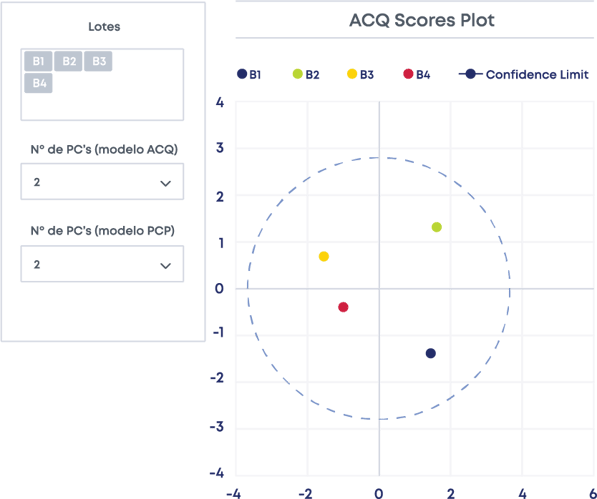
Here you define the statistical parameters (Process Capability Index [CpK], normality testing parameters, control limits) for each one of the CPPs and the corresponding process control limits in alignment with your control strategy.
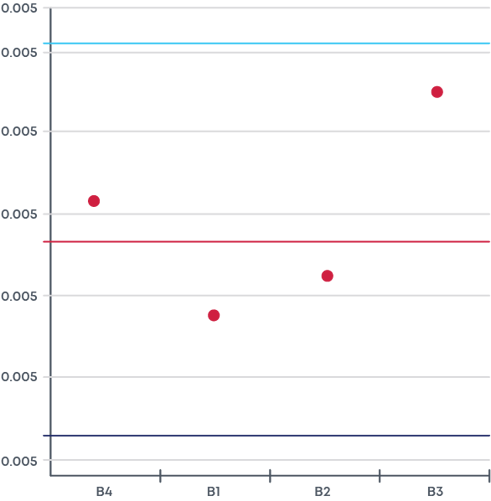
The last step consists of configuring the statistical signals (with Westgard Rules, for example) that can be automatically triggered during the routine CPV.
This means that, if any of the signals is triggered, the affected batches will be highlighted, and the responsible users immediately notified.

And that’s it! Your CPV plan is configured and ready to operate autonomously.
Another major benefit of the Digital CPV is your ability to check product data at any time through routine monitoring panels. The interface with the user can be in the format of a PCA plot, control chart or CpK /PpK plots, just to name a few.
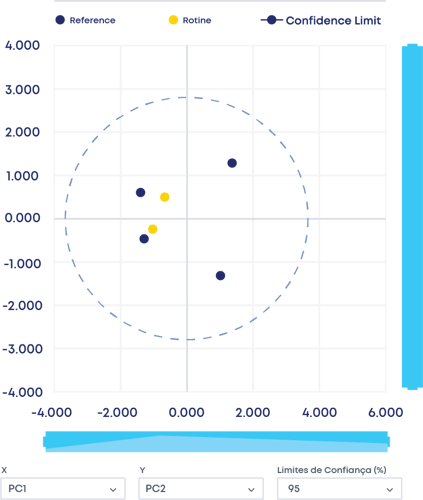
Figure 1 - Multivariate CQA Analysis
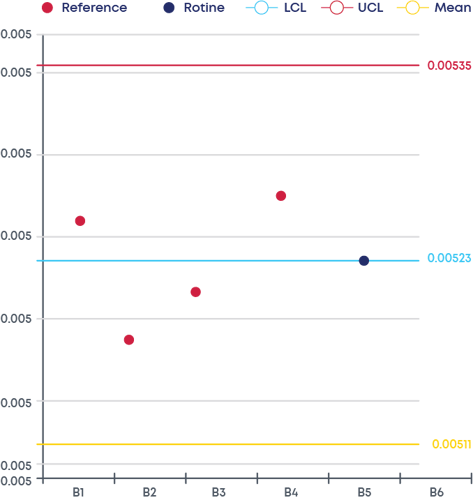
Figure 2 - Control chart
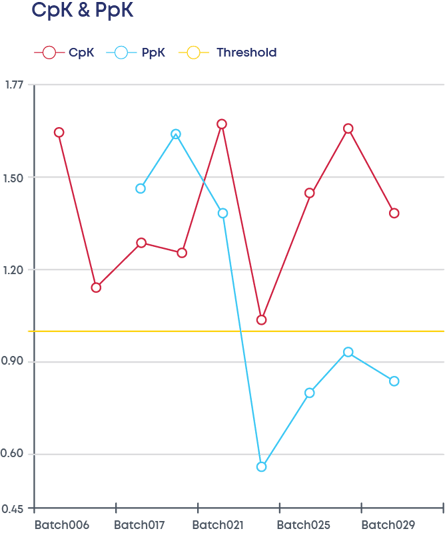
Figure 3 - CpK and PpKs
The best part about implementing a digital CPV is observing its outcomes.
For the presented case study, a very evident outcome was the substantial reduction in the necessary workforce: We started with more than 10 people, and the Digital CPV implementation reduced the team in about 70%.
These team members are now available to dedicate themselves to do research on improvement opportunities based on the data they don’t have to gather anymore.
While with the manual CPV, a day and a half per week was necessary to put together the reports, the system now performs that task automatically.
Last, but not the least, the data integrity risks disappeared.
ValGenesis has the best Digital CPV solution in the market: Process Insight.
Our team of experts will walk you through the steps identified in this case-study to make sure you reap all the possible benefits from CPV digitalization.

Discover the hidden costs of manual CQV. Learn how AI-enabled digital CQV can enhance efficiency, compliance, and innovation in pharma manufacturing.
By Saurabh Joshi
Read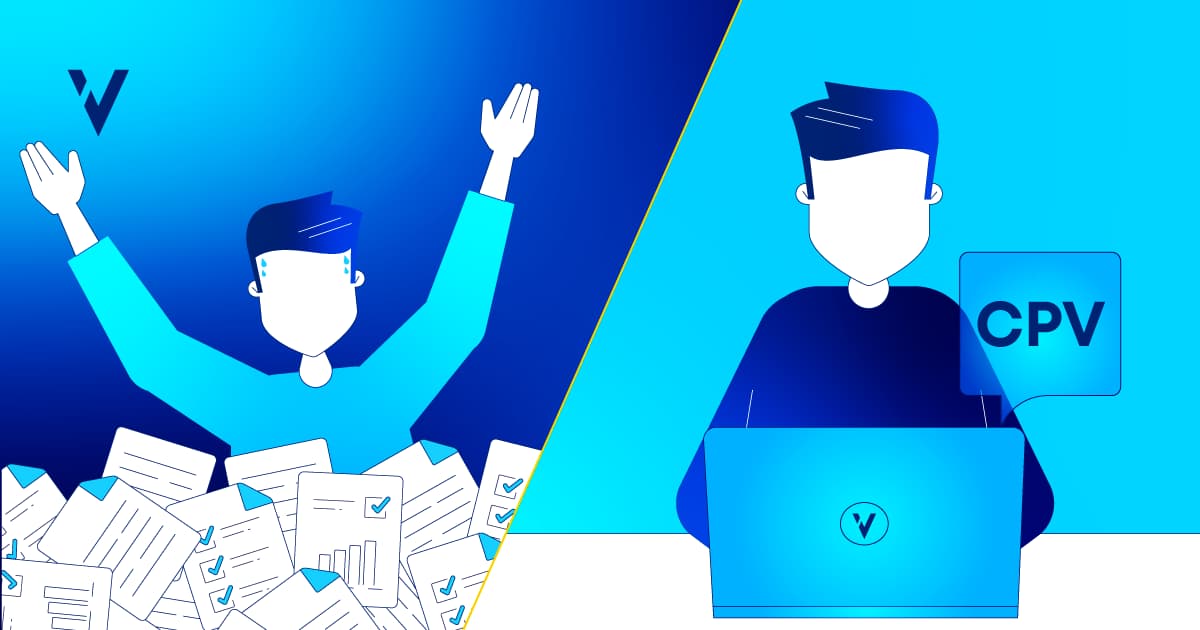
Discover how digital CPV enables real-time quality monitoring in pharma and supports continued process validation across the product lifecycle.
By Maria Batalha
Read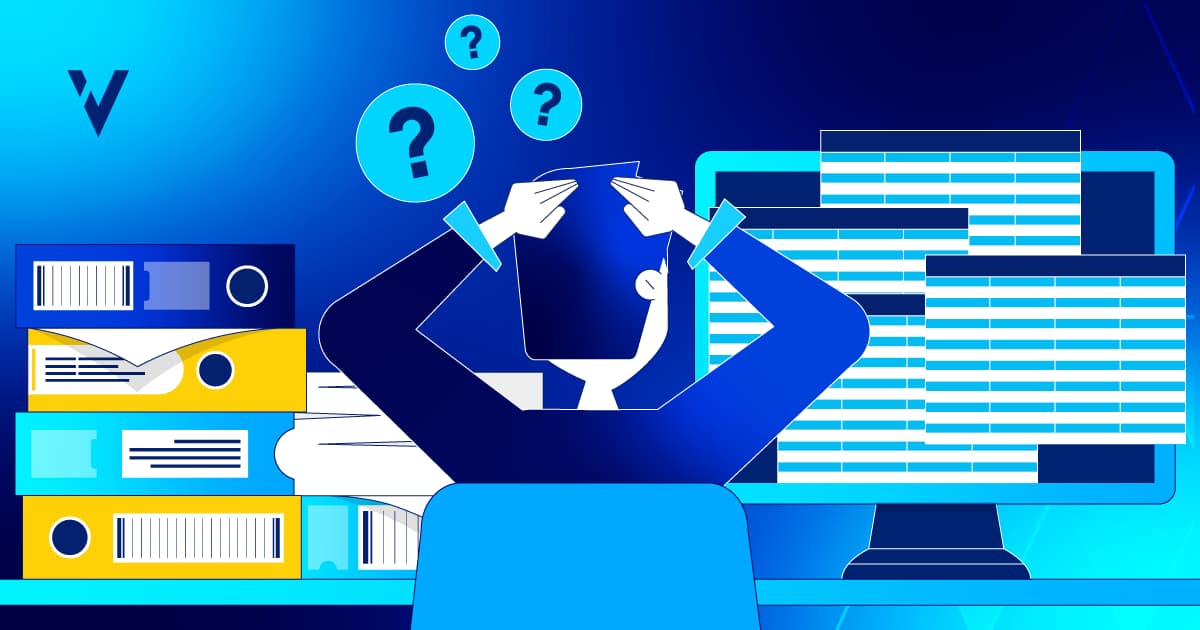
Explore the benefits of computer software assurance for software validation in life sciences. Learn how digital tools address common fears of CSA adoption.
By Jeff Ramos
Read